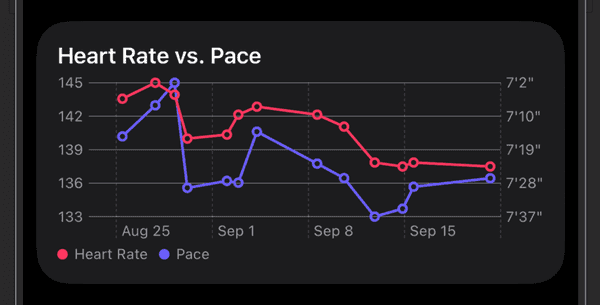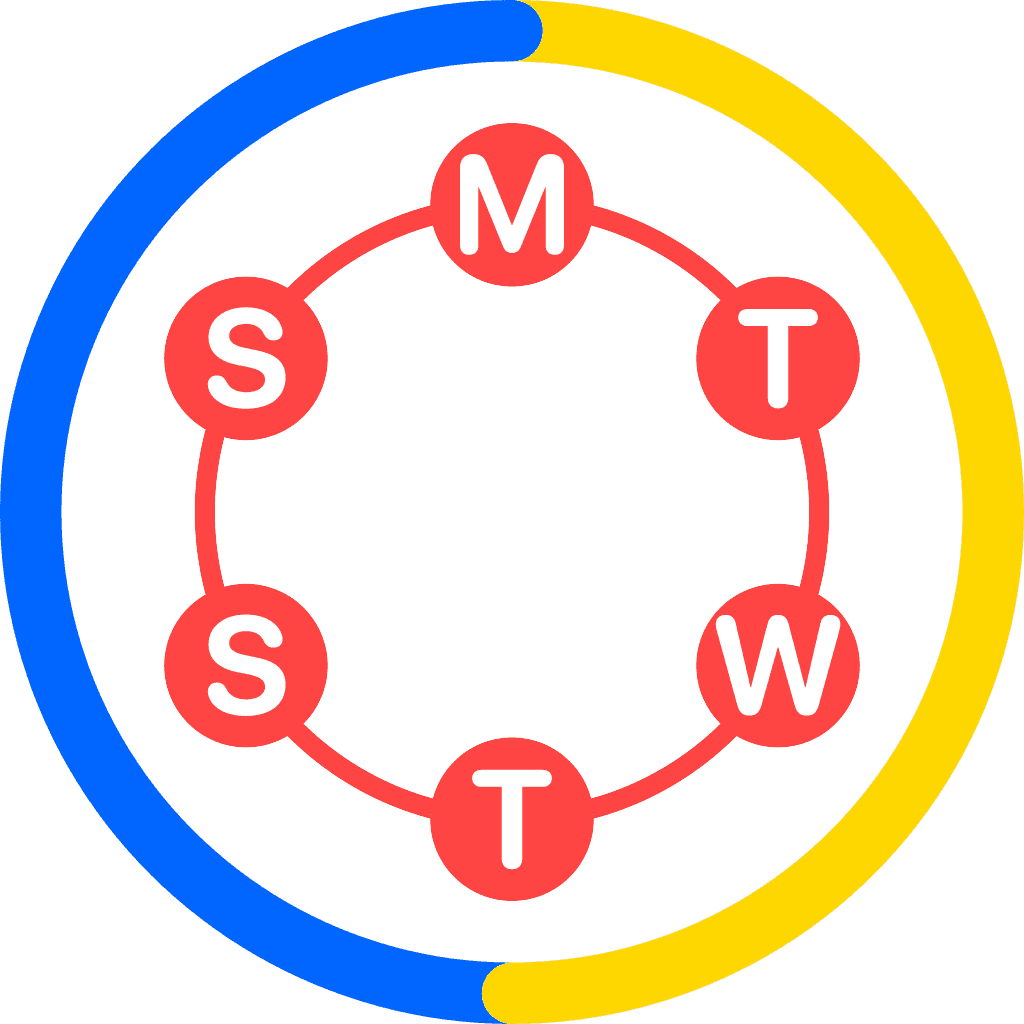Revise heart rate and pace insight card
Last updated: October 20, 2025

The heart rate and pace insight card provides a powerful, simplified view of your training. By filtering out the daily noise of your workouts, it allows you to see the true direction of your fitness. The key to this is the use of two moving average lines: one for your pace and one for your heart rate. By observing the trends of these lines, you can identify six key "states" of your training, each providing crucial insights into what your body is experiencing.
- Ideal Improvement
- What to look for: The Pace moving average line shows a clear uptrend (getting faster), while the Heart Rate moving average line shows a downtrend (getting lower).
- What it implies: This is the gold standard for endurance training. It means your body is becoming more aerobically efficient, allowing you to run faster with less cardiovascular effort. This is the desired outcome of a well-executed training plan.
- Training Adaptation
- What to look for: Both the Pace and Heart Rate moving average lines show a downtrend.
- What it implies: This often occurs when you are in a recovery period, tapering before a race, or if your training volume or intensity has recently decreased. Your body is recovering, and as a result, you are running slower with a lower heart rate. This can also be a sign of overtraining if it's accompanied by other symptoms like fatigue, but in many cases, it's a necessary part of the training cycle.
- Stagnation
- What to look for: Both the Pace and Heart Rate moving average lines are flat or showing very little change.
- What it implies: This suggests you've hit a training plateau. Your body has adapted to your current workload, and you're not getting any faster or more efficient. To break out of this state, you may need to introduce new stimuli, such as a different training method, increased intensity, or higher volume.
- Overreaching
- What to look for: Both the Pace and Heart Rate moving average lines show an uptrend.
- What it implies: This is a key warning sign. You're trying to push a faster pace, but your heart is working harder to achieve it. This is often a sign of overtraining, fatigue, or poor recovery. It means your cardiovascular system is under stress and you might be at risk for injury or burnout if you don't adjust your training load.
- Crossover of Breakthrough
- What to look for: The Heart Rate moving average line crosses below the Pace moving average line.
- What it implies: This state is a rare but powerful indicator. It can signal a major breakthrough in your training. While a downtrend in heart rate and an uptrend in pace is an ideal state, the actual crossover event can signify that your aerobic efficiency has improved to a point where you're not just getting faster with less effort, but the pace gains are now exceeding the heart rate cost in a dramatic way. This is a moment of stable improvement that you can celebrate.
- Crossover of Concern
-
What to look for: The Heart Rate moving average line crosses above the Pace moving average line.
-
What it implies: This is a strong warning sign. It means your heart rate is increasing at a faster rate than your pace is improving (or a slower pace is costing you more heart rate effort). This could be caused by several factors:
- Overreaching or Overtraining: Your body is under too much stress, leading to a higher heart rate for the same effort.
- Illness or Fatigue: Your body is fighting an infection or is not fully recovered from a previous workout.
- External Factors: Environmental stressors like extreme heat, humidity, or high altitude can cause your heart rate to spike without a corresponding increase in pace.
This state calls for an immediate assessment of your training load and recovery to prevent burnout or injury.
By learning to identify these trends, you can make smarter, more informed decisions about your training. While a single workout may not tell the whole story, a consistent view of your moving averages will help you take the right action at the right time to reach your goals.
